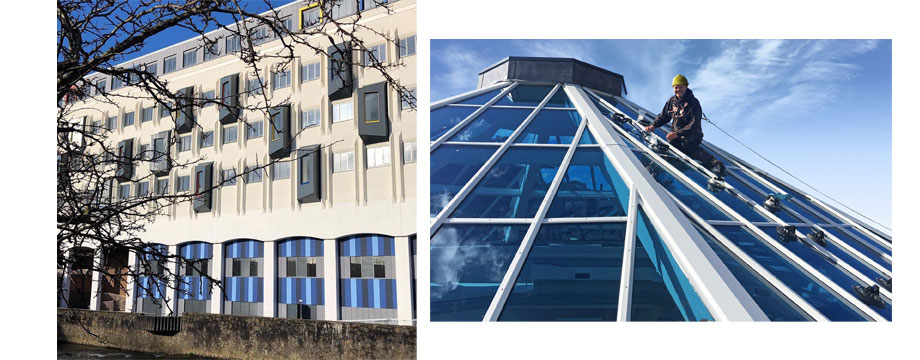With increasing pressure to specify building systems offering clearly defined sustainability, the use of materials that embody recycling as an inherent feature is becoming increasingly significant. Aluminium as a key building component is now used across a wide range of sectors and, as a matter of interest, is still very much the most valuable item in our recycling collection. From an emissions perspective, the use of pre and post-use aluminium greatly reduces energy consumption and adds tangible value to the economics of production. To put this into perspective, it saves around 95% of the energy consumed in the 'primary' production process.

For those specifying metal window and door systems, there is, therefore, a clear incentive to use a raw material that can be reused on an infinite basis. In terms of enabling building designs to achieve the highest level of BREEAM certification, aluminium can also provide tangible benefits when calculating an asset’s environmental, social and economic sustainability through the use of standards developed by BRE. In addition, it enhances specific aspects of technical performance such as thermal, acoustic and energy efficiency.
The use of natural materials, timber, undoubtedly has its supporters but most offer little potential for recycling. Deforestation, dwindling resources and a generally adverse effect on the environment can only become a bigger issue as demand for greater sustainability increases. By contrast, aluminium products made using recycled material present consistently low environmental impact while offering strength, durability, stability and greatly reduced weight compared to steel.
Among the many other benefits aluminium has to offer, natural corrosion and UV resistance enable the specifier to forecast with considerable accuracy the cost of maintenance over a system’s design life. From a manufacturer’s perspective, working alongside specifiers offers considerable benefits in terms of product development. To achieve greater efficiency in terms of thermal transmittance, high-performance fenestration design is becoming increasingly sophisticated. Aluminium can be formed into complex and diverse profile shapes, a feature that makes it ideal for contemporary designs.
Aluminium can be finished using several techniques including Polyester Powder Coating which comes with an abundant selection of RAL colours. For renovation projects, this method of finishing is advantageous as the RAL colour chart offers a colour match to an existing framework to create a cohesive finish to the architectural design. Powder Coating also offers a protective coating to the aluminium, extending the life of the metal as well as offering a seamless look between horizontal and vertical surfaces great for the aesthetics of any modern building.
Aluminium’s ‘permanence’ and its undoubted flexibility and versatility will pave the way for products of increasing environmental value. If we add to this the widely accepted ecological argument against the use of PVCu and tangible evidence provided by aluminium window and door systems with a design life that has already spanned several decades the case for its use has never been stronger.
- Log in to post comments















